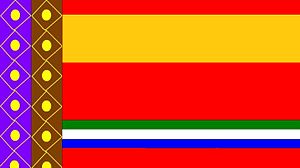Subanen (read as Subanon) people are native to the Zamboanga Peninsula, Misamis Oriental and Misamis Occidental in the southern Philippine island of Mindanao. Subanon are the biggest group of Lumad or non-Muslim indigenous cultural community on the island of Mindanao. The word is derived from the word soba or suba, a word common in Sulu, Visayas, and Mindanao, which means “river,” and the suffix “-nun” or -non” which indicates a locality or place of origin Thus “Subanon” means “a person or people of the river”; more specifically, “from up the river,” since they are usually differentiated from the coastal and plains inhabitants of Zamboanga peninsula. They were originally found along the river banks or "suba" but many reside primarily in the mountains. The continuous bringing in of the Spanish of people from Visayas and to its Penal Colonies of recalcitrants from Luzon forming the Chavacanos. Migrations of Cebuano speakers in the coastal areas of the Zamboanga Peninsula attracted by the inviting Land Tenure Laws further pushed the Subanon into the interior.Ferdinand Blumentritt mentioned the “Subanos” in his accounts, referring to them as “a heathen people of Malay extraction who occupy the entire peninsula of Sibuguey (west Mindanao) with the exception of a single strip on the south coast” (Finley 1913:2). Finley, recording his impressions of the Subanon at the beginning of American occupation of southern Philippines in the 1900s, cited published records of early Spanish chroniclers, notably the writings of Father Francisco Combes in 1667, to argue that the Subanon were the indigenous of western Mindanao.The groups that traditionally remained animist call themselves "Subanen", or "Subanon" in the area closer to Zamboanga City. Other groups who are linguistically members of the Subanen language subgroup but adopted Islam call themselves "Kolibugan" in western areas and Kalibugan in the central area. Although claims are often made that the Kolibugan/Kalibugan are ethnically mixed with Sama, Badjau, Tausug, or Maguindanaon, there is no evidence supporting those claims, and linguistically, the languages of the Islamic members of the Subanen subgroup are virtually identical with the language of the neighboring non-Islamic group, except that the Islamic groups have a larger amount of Arabic vocabulary that refers to aspects of life that deal with religious concepts.Outsiders often call the Subanen "Subano", which is apparently a Spanish version of the native name. Likewise, many outsiders call all of the Muslim groups "Kalibugan".The language of this group is generally referred to as Subanon. However, there are dialectal variations, depending on the locality in which the people live. The Subanon groups are dispersed over a wide area of the Zamboanga peninsula. The major localities they inhabit—many of which are valleys nestled among the rugged mountains—are Dapitan, Dipolog, Manukan, Sindangan Bay, Panganuran-Coronado, Siocon, Quipit, Malayal-Patalun, Bolong, Tupilak, Bakalay, Lei-Batu, Dumankilas Bay, Dinas, Lubukan, Labangan, and Mipangi. In certain places, the Subanon language has some Visayan and Moro words mixed in, as a result of centuries of trading activities between Cebu and the northern coast of Mindanao (Finley 1913:11). The Kalibugan or the Subanon who were converted to Islam speak a language which is a mixture of Kalibugan and Moro.In 1912, the Subanon were officially estimated to number 47,164. By 1988, their population had grown to about 300,000. The Zamboanga peninsula, more than 200 kilometers long, shaped like a giant crooked finger that extends westward to the Sulu Sea, is joined to the Mindanao mainland by a narrow strip of land, the isthmus of Tukuran, which separates the bays of Iligan and Illana. Beyond this, and to the east, is the main region of Muslim Mindanao which is made up of Lanao del Sur, Lanao del Norte, Maguindanao, Sultan Kudarat, and North and South Cotabato. The peninsula itself is divided into four provinces: Zamboanga del Norte, Zamboanga del Sur, Zamboanga Sibugay and Misamis Occidental. Some communities of Subanon also live in the last province, particularly along the mountainous provincial boundary.While practically the whole of Zamboanga has always been the ancestral domain of the Subanon, some areas of the peninsula are occupied by Muslims, and a few others by Christian settlers. The entire southern coastal region of Zamboanga del Sur, from the Basilan Strait to Pagadian near Lanao, is populated by mixed Muslim groups. Major urban concentrations—such as Zamboanga City, Pagadian, and Dipolog—have sizeable numbers of Christians. Towards the tip of the peninsula, in an area straddling the boundary between the two Zamboangas, live the Kalibugan, who number some 15,000.The Subanon people are farmers. They cultivate crops, with rice as the most important crop, but they are also known to raise livestock including pigs, chickens, cattle, and water buffaloes. Subanen houses are built along hillsides and ridges overlooking family fields.

Area total (m2)
23409000000.000000
Demonym
Subanen
Flag
Subanon Flag.jpg
Leader title
Deputy Tribal Council
Timuay
Tribal Council
Longname
Subanon Territories



Comment
0